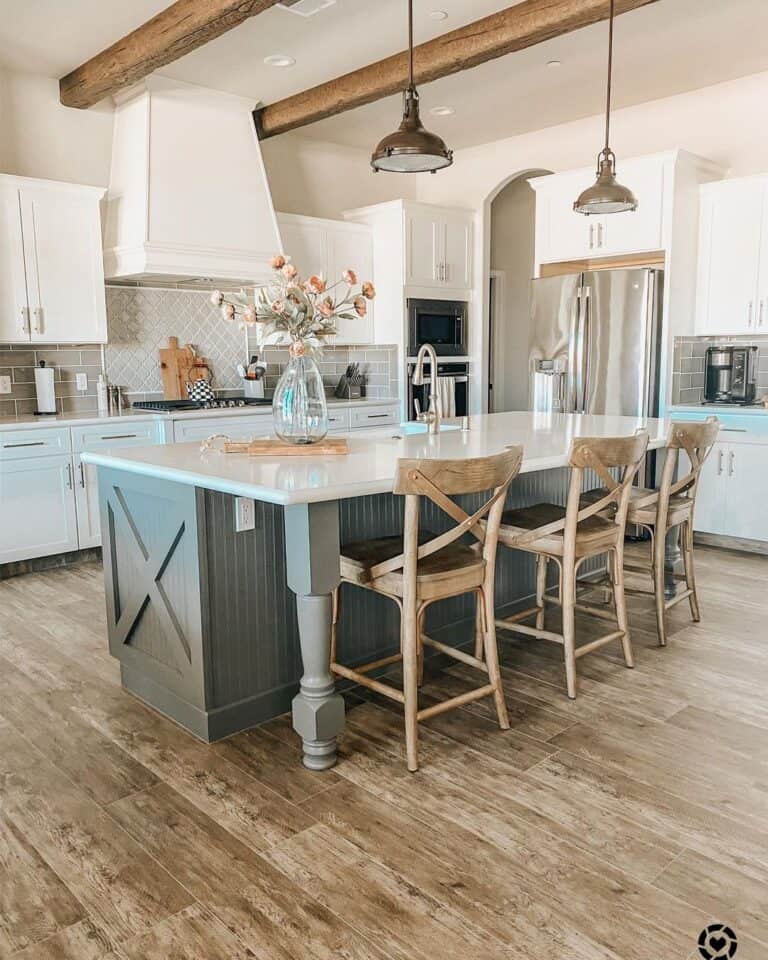Update Your Kitchen's Aesthetic with Premium Legs For Kitchen Island
Update Your Kitchen's Aesthetic with Premium Legs For Kitchen Island
Blog Article
Necessary Aspects to Think About When Choosing Legs For Kitchen Area Island
Selecting the appropriate legs for a kitchen island entails a mindful evaluation of several elements that can significantly affect both capability and aesthetic appeal. Amongst these, the selection of material plays a pivotal duty in making certain longevity, while the style should complement the existing style. Moreover, considerations such as elevation and weight assistance are important for security and convenience. As we discover these aspects, it becomes clear that each choice can have far-ranging effects for the general kitchen experience. What subtleties should be considered in each of these groups to achieve the excellent equilibrium?
Material Options
When choosing legs for a kitchen island, comprehending the numerous material choices is crucial for achieving both aesthetic allure and architectural integrity (Legs For Kitchen Island). The option of product significantly influences not just the longevity of the island but likewise its total design and functionality
Steel legs, usually made from stainless steel or functioned iron, add a commercial and contemporary feel while making sure toughness and security. These materials are resistant to wear and can sustain substantial weight, making them ideal for larger islands.
An additional alternative is crafted products, like MDF or plywood, which can be a lot more economical while still providing a range of finishes. However, they might not supply the exact same level of stability as strong timber or metal. Materials such as acrylic or glass can develop a contemporary look, though they might need additional assistance to guarantee stability.
Inevitably, the choice of material for cooking area island legs should line up with the desired capability and the general motif of the kitchen area.
Style and Layout

When thinking about style, the shape and surface of the legs are important. Conical legs can give a feeling of agility and style, while thicker, extra durable legs can share toughness and security. In addition, the coating-- be it repainted, discolored, or all-natural-- must match the cabinets and counter top materials to create a unified look.
Moreover, the layout of the legs can additionally mirror individual taste. Customized or decorative legs, such as those featuring intricate makings or special geometric forms, can function as centerpieces, including personality and character to the kitchen area. Ultimately, the right selection will certainly not only improve capability however additionally boost the aesthetic appeal, making the kitchen island a standout attribute of the home.
Elevation Considerations
Choosing the proper height for kitchen area island legs is essential, as it directly affects both functionality and comfort. The standard height for a cooking area island generally varies from 36 to 42 inches, aligning with typical kitchen counter heights.

It is likewise vital to account for customers' choices and elevations. Customizing the elevation can make sure a comfortable experience for all member of the family, making the kitchen area island a more functional and satisfying space.
Weight Assistance
Making sure sufficient weight assistance for kitchen area island legs is vital for both security and functionality. The cooking area island typically offers several objectives, including food prep work, dining, and added storage, demanding a robust assistance structure. When picking legs, it is essential to consider the total weight ability called for based on the island's planned usage and the materials that will certainly be positioned on it.
The selection of product for the legs plays a considerable duty in their weight-bearing capabilities. Strong timber, metal, and durable compounds typically supply superior stamina contrasted to lighter materials. Furthermore, the layout of the legs-- whether they are straight, tapered, or have a pedestal form-- can affect their capacity to distribute weight efficiently throughout the framework.
Constantly consult the manufacturer's specifications regarding load limits to ensure that the legs can maintain the desired weight without endangering security. In summary, choosing kitchen island legs with sufficient weight support is essential for creating a secure and useful culinary space.
Installment and Upkeep
Appropriate setup and maintenance of cooking area island legs are essential for making certain durability and stability. To begin, it is important to adhere to the maker's guidelines throughout installment. This typically about his involves securing the legs to the space station utilizing appropriate bolts, guaranteeing that the legs are level and straightened. Using a level device can help protect against tottering and enhance the total aesthetic allure of the kitchen area island.
When installed, routine upkeep is required to maintain the integrity and look of the legs - Legs For Kitchen Island. For wooden legs, regular cleansing with a damp fabric and application of suitable wood gloss can avoid wetness damages and maintain their coating. Steel legs may need a mild cleaning option to get rid of grease and gunk, adhered to by a dry fabric to avoid rust formation
Additionally, check the legs consistently for signs of wear or damages, such as cracks or loosened joints. Tightening up screws or bolts as required can likewise extend the life-span of the legs. By sticking to these installation and maintenance practices, property owners can make sure that my company their cooking area island continues to be tough and aesthetically appealing for years to come.
Conclusion

Visual comprehensibility is critical in choosing the design and layout of legs for a kitchen island, as these aspects considerably affect the total ambiance of the space. Tapered legs can supply a feeling of agility and elegance, while thicker, much more robust legs can communicate look at here now toughness and security.Picking the appropriate height for kitchen island legs is important, as it straight affects both performance and convenience. In recap, picking cooking area island legs with ample weight assistance is essential for creating a functional and safe culinary space.
In conclusion, selecting legs for a kitchen island necessitates careful consideration of numerous factors, consisting of product alternatives, design, height, weight support, and installation.
Report this page